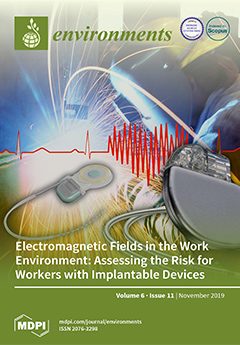Arpa Piemonte has been carrying out, for a long time, controls on clearable materials from nuclear power plants to verify compliance with clearance levels set by ISIN (Ispettorato Nazionale per la Sicurezza Nucleare e la Radioprotezione - National Inspectorate for Nuclear Safety and
[...] Read more.
Arpa Piemonte has been carrying out, for a long time, controls on clearable materials from nuclear power plants to verify compliance with clearance levels set by ISIN (Ispettorato Nazionale per la Sicurezza Nucleare e la Radioprotezione - National Inspectorate for Nuclear Safety and Radiation Protection) in the technical prescriptions attached to the Ministerial Decree decommissioning authorization or into category A source authorization (higher level of associated risk, according to the categorization defined in the Italian Legislative Decree No. 230/95). After the experience undertaken at the “FN” (Fabbricazioni Nucleari) Bosco Marengo nuclear installation, some controls have been conducted at the Trino nuclear power plant “E. Fermi,” “LivaNova” nuclear installation based in Saluggia, and “EUREX” (Enriched Uranium Extraction) nuclear installation, also based in Saluggia, according to modalities that envisage, as a final control, the determination of γ-emitting radionuclides through in situ gamma spectrometry measurements. Clearance levels’ compliance verification should be performed for all radionuclides potentially present, including those that are not easily measurable (DTM, Difficult To Measure). It is therefore necessary to carry out upstream, based on a representative number of samples, those radionuclides’ determination in order to estimate scaling factors (SF), defined through the logarithmic average of the ratios between the i-th DTM radionuclide concentration and the related key nuclide. Specific radiochemistry is used for defining DTMs’ concentrations, such as Fe-55, Ni-59, Ni-63, Sr-90, Pu-238, and Pu-239/Pu-240. As a key nuclide, Co-60 was chosen for the activation products (Fe-55, Ni-59, Ni-63) and Cs-137 for fission products (Sr-90) and plutonium (Pu- 238, Pu-239/Pu-240, and Pu-241). The presence of very low radioactivity concentrations, often below the detection limits, can make it difficult to determine the related scaling factors. In this work, the results obtained and measurements’ acceptability criteria are presented, defined with ISIN, that can be used for confirming or excluding a radionuclide presence in the process of verifying clearance levels’ compliance. They are also exposed to evaluations regarding samples’ representativeness chosen for scaling factors’ assessment.
Full article





